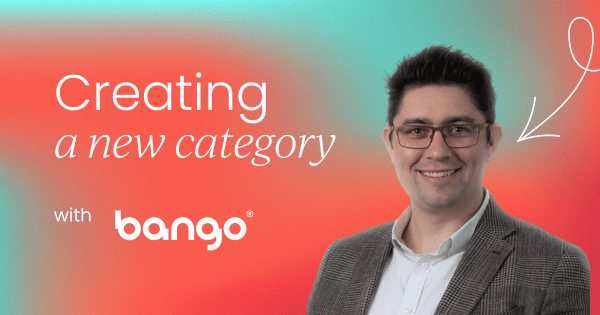Picture this: it’s my first day as the new VP of Marketing at Bango. I sit down at my desk, open my laptop, and start reminding myself of all the promises I’d made in my interview – evolving the value proposition, refining the messaging, building a pipeline.
Then, just as I’m ready to dive in, the news breaks: we’ve acquired another company. No new product features for a while.
Suddenly, everything feels up in the air. How do you reposition a business, refresh the messaging, and inspire the market without something new to sell?
For us, the answer was bigger than the product – it was about creating a category. Instead of fighting for airtime in an old conversation, we redefined the rules, reframed the narrative, and gave the industry a new language: super bundling.
What followed was part chaos, part creativity, and ultimately transformation. Along the way, I learned 11 powerful lessons about what it really takes to build momentum, gain alignment, and carve out space as a category creator.
Let’s dive into our first lesson.
Lesson #1: Spend time on discovery to inform strategy
The first step in creating a new category is discovery. You need a deep understanding of your ideal customer profiles (ICPs), your target market, and the pain points your product solves.
When we did this work, we uncovered some surprising insights. Our biggest competitor wasn’t another company; it was DIY solutions that we had to find a way to outshine.
We also realized that our category (bundling) was about as newsworthy at that time as yesterday’s weather. We needed to spice it up.
That’s the job of discovery: dig deep and unearth the story you’re going to tell.
Lesson #2: Set clear objectives
From there, it’s about setting clear objectives. For us, the first was creating awareness. The business had been around for 25 years, but our new proposition wasn’t well-known. People either didn’t know us at all or knew us for something else entirely.
We had two jobs: attract new prospects and educate the people who already knew us about our new product. On top of that, our pipeline was looking pretty empty; we needed to fix that too.
We also wanted to rework the product name, which had been come up with on the fly, just to get something to market. The broader proposition needed attention as well. Those became our objectives.
Lesson #3: Create leading positioning
We didn’t just want to participate in the market – we wanted to lead it. So, our next step was to create leading positioning.
At that point, we had a basic product name, a market no one was talking about, and a product in need of a clearer definition. Not exactly an ideal launchpad.
So, we dug deeper and surveyed 5,000 US subscribers. What we found gave us the spark we needed.
As you’ve probably noticed, there’s been massive growth in the subscription economy over the last few years. We found that this was creating major subscription fatigue among consumers. They had more subscriptions than they could manage, and yet they still wanted more.
What consumers really wanted was control over their subscriptions. That’s where our product came in. We realized we could give customers control back through something we started calling super bundling – the ability to pay for and manage all your subscriptions in one place.
Mobile operators had long been offering bundling (think about all those “get Netflix free with us” deals), but super bundling was different. Multiple subscriptions, all in one place. That solved a real problem for their customers.
It also weakened our biggest competitor: DIY. The more complex bundling becomes, the harder it is to manage yourself. The more we inspired people with super bundling, the more likely they were to turn to a third party like us.
What started as a comms campaign idea evolved into our positioning. And because no one else was talking about super bundling, we had the chance to position ourselves as the leader.
Lesson #4: If you create the category, you set the rules
Here’s the beauty of creating a category: you get to set the rules. Once we’d framed all our conversations around super bundling, everything started to shift.
It didn’t matter whether we were talking to prospects, existing customers using a different product, or the media. As long as we were explaining super bundling – paying for and managing all your subscriptions in one place – we controlled the conversation.
The effects were immediate. Suddenly, RFQs (requests for quotes) started coming in with “super bundling” written right into them. That term barely existed before, but now people were asking for it by name.
Events we attended began to feature sessions on super bundling – and naturally, we were positioned as the experts to speak about it.
By creating the category, we defined the rules of engagement. We set the meaning, the language, and the narrative. We reinforced this narrative by seeding stories about super bundling across different media channels, pushing the message consistently into the market.
Lesson #5: It’s easier to get buy-in when you tell stories from the consumer perspective
The next lesson is all about perspective. It’s far easier to get buy-in when you tell your story from the consumer’s point of view.
We’re a B2B SaaS company, so we could have focused on our product’s features, functionality, and technical capabilities. But instead, we told a bigger story – the story of a massive problem in the subscription economy that only our product could solve for their users.






